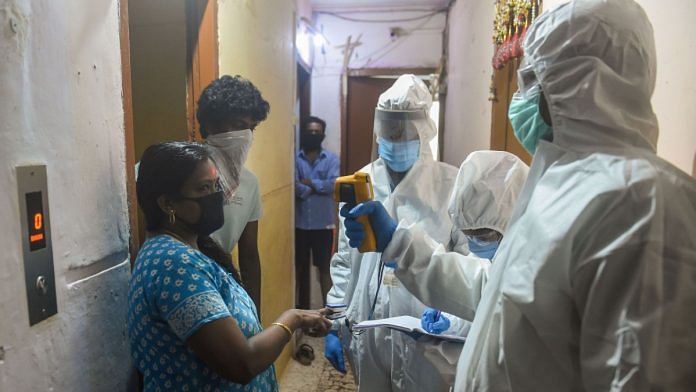Mumbai: Around six in ten people living in some of India’s biggest slums have antibodies for the novel coronavirus indicating they’ve recovered from infection, in what appears to be one of the highest population immunity levels known worldwide.
The findings, from a July serological survey of 6,936 people across three suburbs in India’s financial center of Mumbai, may explain why a steep drop in infections is being seen among the closely-packed population, despite new cases accelerating overall in the hard-hit country.
“Mumbai’s slums may have reached herd immunity,” said Jayaprakash Muliyil, chairman of the Scientific Advisory Committee of India’s National Institute of Epidemiology, and the retired head of one of its premier medical colleges. “If people in Mumbai want a safe place to avoid infection, they should probably go there.”
The findings of the study, which was conducted by municipal authorities and the Tata Institute of Fundamental Research, suggest that despite efforts to contain its spread, Mumbai’s poorest places may have unwittingly pursued the controversial strategy of herd immunity. This describes an approach in which infection is allowed to run through a population to faster neutralize the pathogen’s threat.
About 57% of surveyed people in the slums of Dahisar, Chembur and Matunga had antibodies in their blood, compared to 21.2% found in an April study in New York City, and 14% reported in Stockholm in May.
A “hands-off” approach has been criticized in places like Sweden, where it appears to have resulted in more deaths than neighboring countries that implemented lockdowns. But the findings from Mumbai’s slums, where the population is young and less pre-disposed to severe cases of Covid-19, may support public health strategies more focused on protecting the vulnerable without trying to suppress the virus completely.
With social distancing more or less impossible, Mumbai’s slums are singularly well-suited for the coronavirus’s spread. Dharavi, the largest, packs a population as big as San Francisco’s into an area the size of New York’s Central Park, with as many as 80 people often sharing a public toilet, and families of eight regularly packed in a 100-square-foot room.
Yet the slums have seen steep drops in infections in recent weeks after cases first erupted in April, even as India’s overall cases grow at the fastest pace globally. Credit has largely been given to the intensive containment measures officials implemented in the slums, like door-to-door health screenings and rapidly-erected quarantine facilities.
The serological findings suggest another possibility: the crisis may be largely over because the virus has spread efficiently, not because it was stopped.
“One explanation is they did an excellent job containing it, the other is that herd immunity has been reached,” Muliyil said. “The virus does its work. The virus doesn’t worry about your quarantine and it is much more efficient than your efforts to contain it.”
He does, however, credit the government’s containment measures with keeping mortality rates low in the slums, because the proactive surveillance ensured that cases were caught early and given high quality care. Of a population as big as a million people, Dharavi has recorded 253 deaths.
Growing herd immunity may also be behind the dip in cases in the capital city of New Delhi, said Muliyil, where a study in early July found that a quarter of the population had been exposed.
Epidemiologists generally believe that infection levels must reach 60% to create herd immunity. But exposure concentrated in the populations least able to socially distance could still slow the overall spread of infection.
In Mumbai overall, new cases dropped to the lowest tally in almost three months this week, although the July antibody survey found only 16% had been exposed to the virus among those living in places where social distancing is more feasible, like apartment buildings and houses. – Bloomberg
Also read: 57% of Mumbai slum dwellers were exposed to Covid, developed antibodies, finds sero survey



